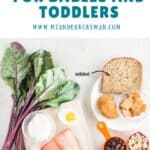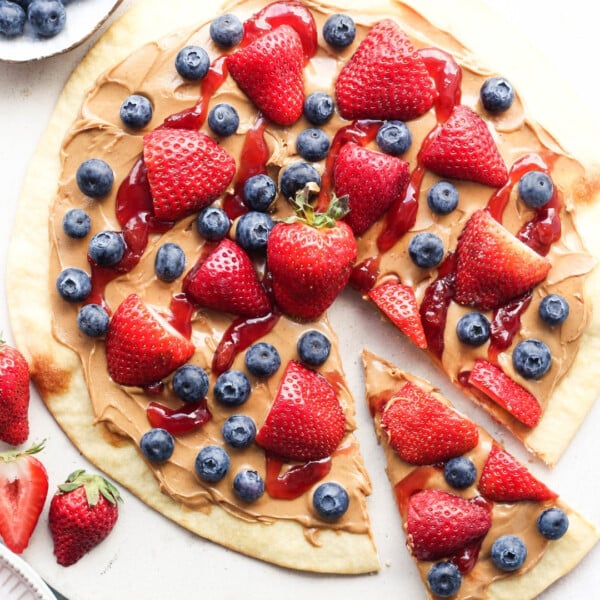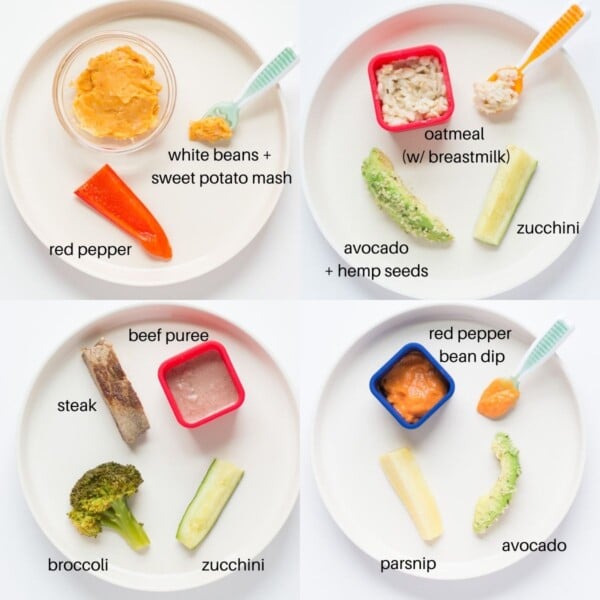This post may contain affiliate links. Please see our disclosure policy for more details.
There are so much worries and questions regarding salt intake for babies and toddlers. Find all the answers as well as practical ways to ensure that your child doesn’t get more than what they need.
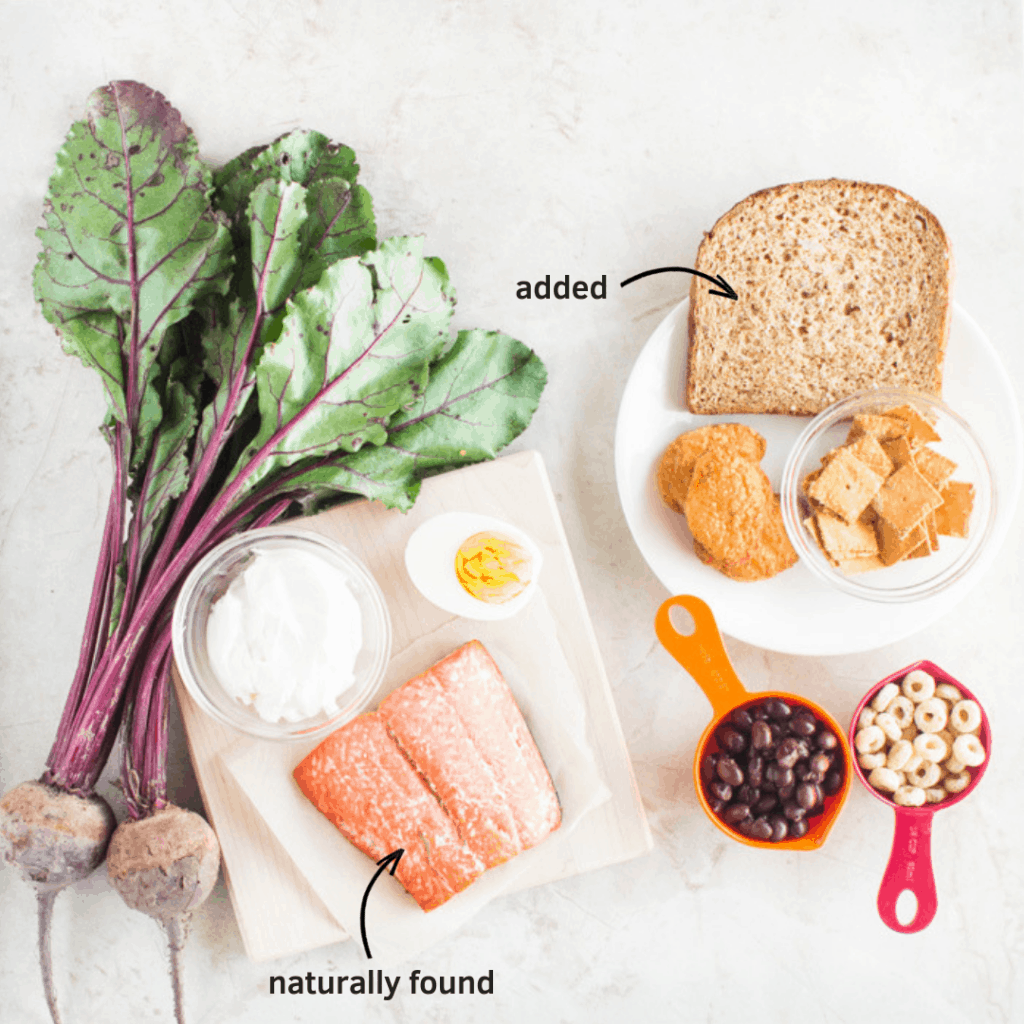
Salt vs. Sodium
Oftentimes salt and sodium are used interchangeably, but they are not the same.
Salt
Table salt that we eat is made up of sodium (40%) and chloride (60%). We definitely need both of these electrolytes (as well as potassium) to:
- help send messages along the nerves
- enable muscles to contract, balance the amount of fluids in the body
- enhance nutrient absorption
- regulate acid-base balance
- absorb potassium
- control the level of bacteria present in the stomach
While salt is made up mostly of chloride, it is in the high-sodium category.
Amount of Sodium in Table Salt
- 1/4 teaspoon = 575 mg sodium
- 1/2 teaspoon = 1,150 mg sodium
- 3/4 teaspoon = 1,725 mg sodium
- 1 teaspoon = 2,300 mg sodium
Sodium
Sodium is found naturally in foods as well as added to processed foods. It’s practically in every food. By focusing on consuming fresh, minimally processed whole foods, you can easily meet your body’s sodium needs.
The problem is that we’re consuming way more than what’s recommended by gravitating towards packaged, processed or restaurant food.
Reasons to limit Salt or Sodium
Health Consequences
Research shows that 79% of preschoolers aged 1-3 years consume more than the recommended amount of sodium each day.
Sodium intake is related to high blood pressure (aka the “silent killer”), which is a major risk factor for heart disease and stroke. And as you may know, they are the leading causes of death in the United States.
While you may think hypertension occurs only in adults, children are not immune from it (source). And what’s concerning is that high blood pressure in children has been shown to track into adulthood.
High sodium intake also can impact bone health. Studies show a positive correlation between salt intake and calcium excretion, resulting in a reduced peak bone mass. This also is concerning as bone mass attained in childhood has a great impact on lifelong skeletal health.
SHAPING FOOD PREFERENCES
Studies show that babies are born with innate preferences for sweet and salty flavors. Sweet and salty foods are highly palatable and and elicit a highly rewarding experience.
It is no wonder that your child are more likely to choose sodium-rich foods, like pizza and chips, over vegetables and other whole foods.
Remember, eating habits developed during the early years influence lifelong eating behaviors. Therefore, it is crucial for us as parents to help set the stage for healthy eating habits and shape food preferences as early as possible (source).
I believe one of the main reasons why my toddler enjoys his vegetables so much is that he hasn’t been exposed to all the highly palatable/addictive foods.
Now, as he grows up, I know he’ll inevitably be exposed to more processed foods. But by shaping his food preferences early on, my hope is that he’ll continue to enjoy his veggies and other wholesome foods
How much sodium per day?
Dietary Reference Intakes (Adequate Intakes)
- Babies: 370 mg/day (keep in mind breastmilk/formula contains sodium)
- 1-3 years: 800 mg/day
For babies, you may have heard that their kidneys are too immature to handle too much salt. It makes sense. But when I researched, I found no evidence to support this.
However, until we have definite research to show that adding salt to baby’s food is safe, we have these established recommended intakes that help guide us. You don’t have to be overly strict with your baby’s sodium intake, but you do want to be mindful.
Top Food Sources of Sodium
- Breads and rolls
- Pizza
- Processed meats
- Soups
- Condiments (e.g. ketchup, soy sauce, salad dressings)
- Canned foods
- Savory snacks (e.g. chips, crackers)
- Dairy products (milk, yogurt, cheese)
Practical tips to manage sodium intake
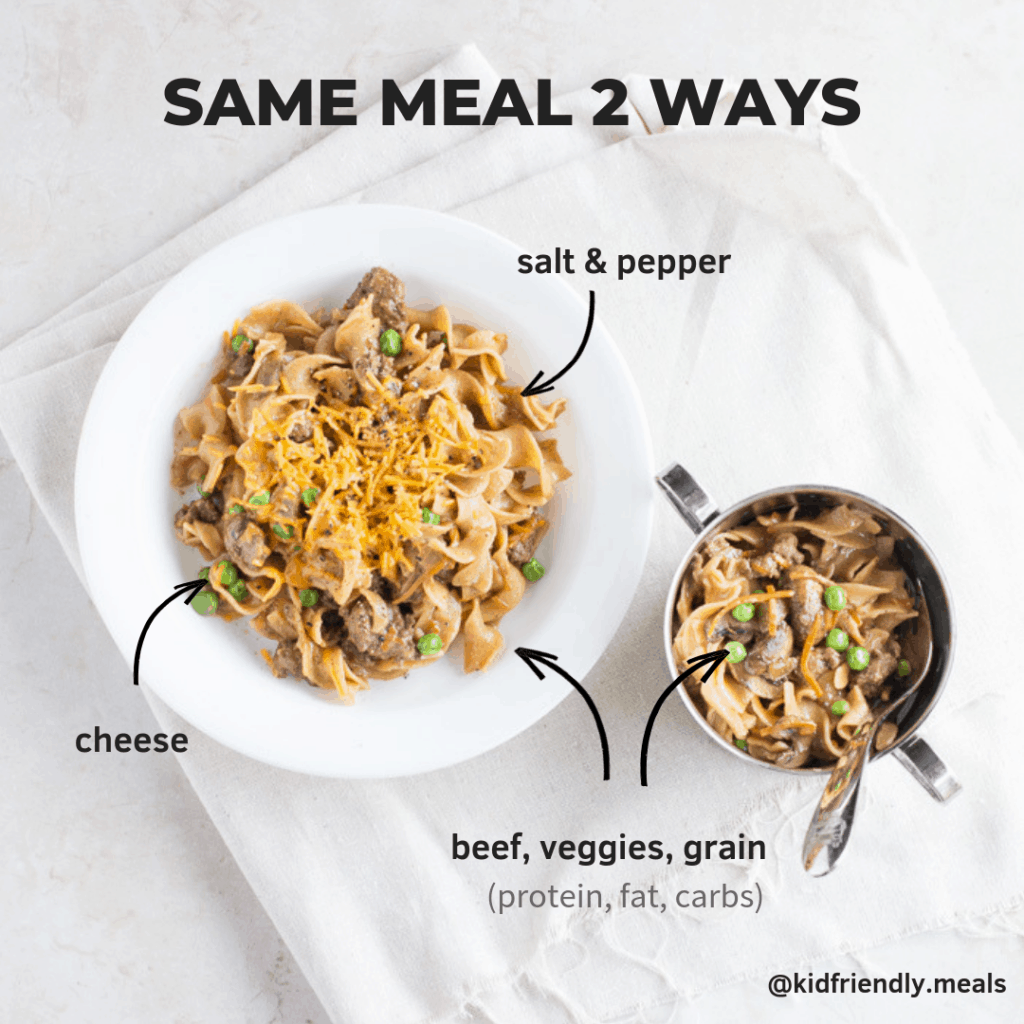
- Choose fresh whole foods, such as fruits and vegetables, fresh meat, fish and poultry.
- Don’t go to the groceries hungry and shop the perimeter as so many temptations lurk in the aisles.
- You don’t have to completely avoid processed food but do cut back if you find yourself reaching for them frequently
- Be sure to read the nutrition labels. Look at the ingredient list (shorter the better), fiber and sodium content (aim for 140mg or less per serving).
- Look for foods labeled “low sodium”, “no salt added.”
- Aim for no more than 1 product that comes from a box, bag, or jar at each meal/
- Put down the salt shaker and have fun with herbs, spices, lemon, garlic, vinegar- great ways to add flavor and extra nutrients.
- Don’t be fooled. sea salt and kosher salt contain the same amount of sodium as table salt.
- Limit dining out but when you do, try to enjoy the experience of being out with the family rather than worrying. Perhaps pack something from home so that you can offer that alongside the restaurant meals. You can always ask to have no salt added to your food, if possible, or look for low-sodium options. Also ask for dressings and sides on the side. In other words, don’t be afraid to ask!
- Don’t worry too much if your child has more on some days. It’s all about overall balance.
You can also prepare a meal without using table salt, set aside a portion for your child, and season to taste for the rest of the family. That way, you can make ONE meal for the entire family.
My e-cookbooks are filled with low-sodium yet flavorful snacks and meals that everyone in your family will enjoy!
Don’t be surprised if you find yourself reaching less and less for the salt shaker. I’ve found that as a result of watching my little one’s sodium intake, my tastebuds changed as well!

